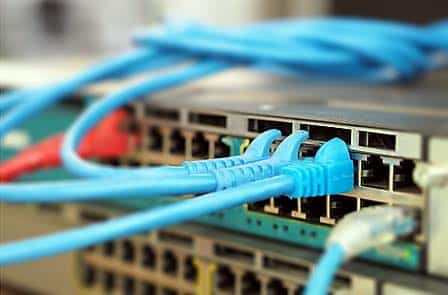Public or private: it’s the kind of question IT professionals like to argue about over drinks at the hotel bar after a convention. Your business’s preference for one over the other probably informs many of its network decisions. In fact, it may even determine your whole networking infrastructure.
And that’s where the MPLS versus SD-WAN debate comes in. While many professionals consider SD-WAN to be the latest and greatest in enterprise networking, MPLS still has some benefits, depending on your company’s priorities. For instance, MPLS can help you avoid latency and jitter — imperative if you’re hosting on-premise real-time applications. On the other hand, it’s more costly, difficult to setup and reconfigure, and keeps you chained to a single ISP.
Below, let’s take a look at the pros and cons as well as use cases of each configuration to help you decide which one is right for your business — and, of course, so you have a stake in the argument next time you find yourself in a heated networking debate.
The Super-Short Guide to MPLS and SD-WAN
First, let’s take a moment to describe the major differences between the two configurations. Multiprotocol Label Switching, or MPLS, is a protocol designed to efficiently manage traffic between two different locations. It works a lot like switches and routers, using packet-forwarding technology and labels to execute data forwarding decisions. That makes it a reliable option if you hope to avoid packet loss — so it’s great for smooth, uninterrupted experience when using services like VoIP.
SD-WAN, short for software-defined wide area networking, combines all your layers of connections — phone systems, MPLS, broadband, LTE — into one software-controlled wide-area network. Because this configuration can be adapted through a GUI, technicians no longer need to manually adjust network configurations in branch offices or remote locations. And that means broadband allocations aren’t fixed, which represents a significant cost savings when a site needs to dial up its bandwidth. For more on that, let’s take a look at the benefits of SD-WAN versus MPLS.
Benefits of SD-WAN
- Better bandwidth for less money. SD-WAN relies on multiple simultaneous internet connections, rather than managing separate bandwidth allocations for your phone systems, internet and wireless. This means you typically save significantly in circuit costs or routers.
- Reduces manual and on-site configurations. SD-WAN makes it much simpler to manage multiple sites and branch offices, since network configurations can be reshaped quickly using software rather than manual setup.
- Unified security protocols. With SD-WAN, your company can have end-to-end encryption across the entire network. Every location will have the same security configuration.
- Cheaper than a traditional WAN. Even conservative estimates peg SD-WAN at about 5 times cheaper than conventional WANs.
- Not tied to a single service provider. In an MPLS configuration, your company must use the same ISP at all sites. SD-WAN, however, is ISP agnostic, meaning you’re not attached to a single service provider.
Benefits of MPLS
- Reduced latency and packet losses. MPLS is one of the most reliable ways to avoid packet loss disruptions. This can make it a critical feature for businesses that rely on call and video quality.
- Better for real-time on-premise apps. Additionally, because WAN relies on public internet, you may experience increased packet loss, latency and jitter, which make real-time apps downright hostile to use. A private MPLS configuration is often the solution here.
The good news is that you don’t necessarily have to choose between an MPLS network design and an SD-WAN infrastructure. In fact, almost every network design expert advises clients to maintain a MPLS link together with their broadband link in order to better manage real-time traffic for hosted apps, video and phone.
So, going back to the original question, “Is SD-WAN better than MPLS?” the answer is that it depends on what kind of traffic you’re running. Although SD-WAN technology may outpace MPLS at some point as the network design of choice, MPLS and SD-WAN aren’t necessarily at odds with one another. In fact, a network that includes both options will give you the best reliability and functionality. So maybe it’s time we stopped taking sides in the public versus private debate and started appreciating how they complement one another.

